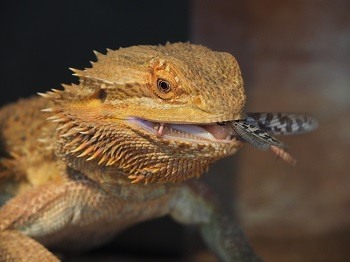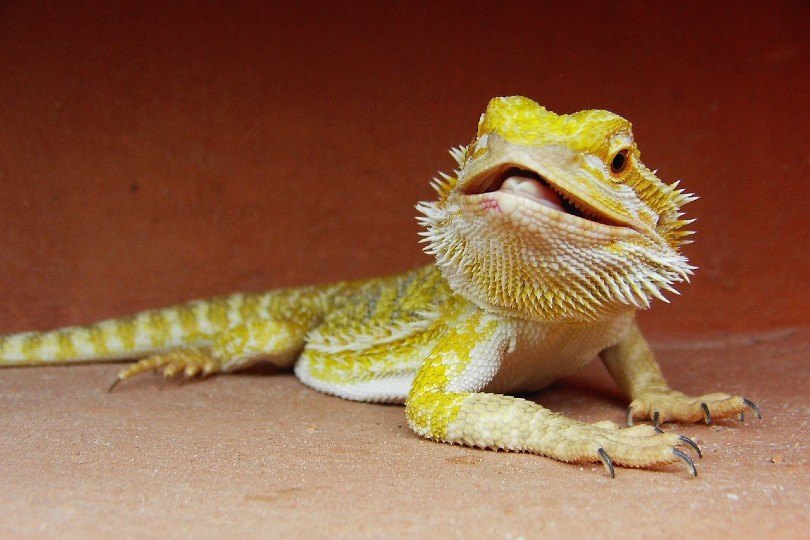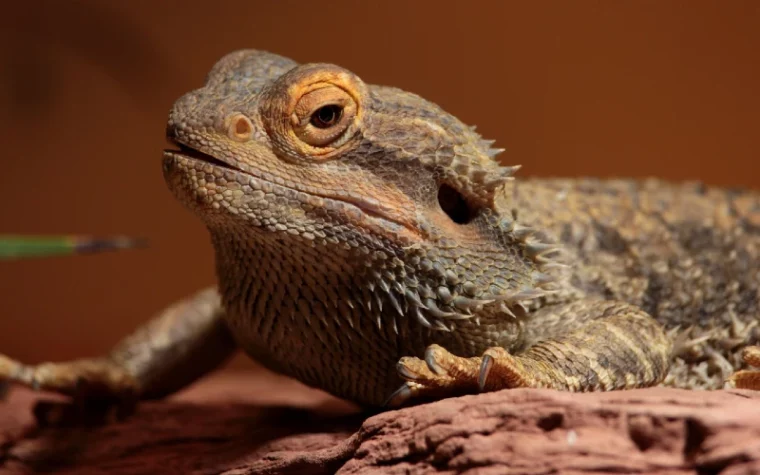
Bearded dragons are generally hardy reptiles, but that doesn’t mean there aren’t diseases that commonly occur in these reptiles. Husbandry issues are extremely common in reptile care because many people aren’t fully educated on the needs of animals before bringing them home.
Although hardy, bearded dragons are reptiles, which means they have very specific requirements when it comes to things like lighting, heating, diet, and humidity. Understanding these requirements can often help prevent the most common disorders in bearded dragons.
The 6 Bearded Dragon Diseases
1. Metabolic Bone Disorder
Often considered to be the most common disorder in captive bearded dragons, MBD¹ is a serious issue that is usually associated with poor husbandry. MBD is also called nutritional secondary hyperparathyroidism, which makes it clear that this disorder is usually associated with dietary issues.
Young beardies seem to develop this disorder more commonly than adult beardies do. Diets high in phosphorus and low in calcium or vitamin D3 lead to MBD. Low vitamin D3 levels can occur when a bearded dragon’s diet lacks enough vitamin D3 or when they lack appropriate levels of UV-B lighting in their environment.
Beardies with MBD can exhibit multiple signs of the disorder, including swelling of the lower jaw, softening of the bones of the face and jaw, and swelling of the back legs and feet. Weakness and trembling of the legs also occur. Fractures of bones throughout the body can occur with MBD. While the causes of MBD can usually be fixed, the damage done by the disorder often cannot be reversed.

2. Mouth Rot
Also known as infectious stomatitis¹, mouth rot is a bacterial infection that occurs in the mouth. It can also impact the jawbone, leading to significant swelling and discomfort.
Signs of mouth rot include swelling of the gums, loosening of the teeth, and petechiae (pinpoint hemorrhages). Some beardies develop thick mucus in the mouth that takes on a consistency similar to cottage cheese. It’s not uncommon for bearded dragons with mouth rot to experience inappetence.
This infection isn’t as common in bearded dragons as it is in many other lizards, but it is still a relatively common problem. Mouth rot is treatable with antibiotics from a veterinarian.

3. Upper Respiratory Infection
The primary cause of URI in bearded dragons¹ is inappropriate husbandry. High levels of humidity, low temperatures, and an overall inappropriate enclosure can lead to these infections in beardies. You may see excess mucus around the mouth and nose, but this mucus won’t be as thick as the mucus seen with mouth rot. Gaping of the mouth, puffing of the throat and body, and general difficulty breathing are all indicators of a URI.
While URI can be treated with medications from a veterinarian, it’s extremely important that you reassess the husbandry and enclosure setup for your beardie to ensure you get everything set up appropriately to keep your beardie healthy.
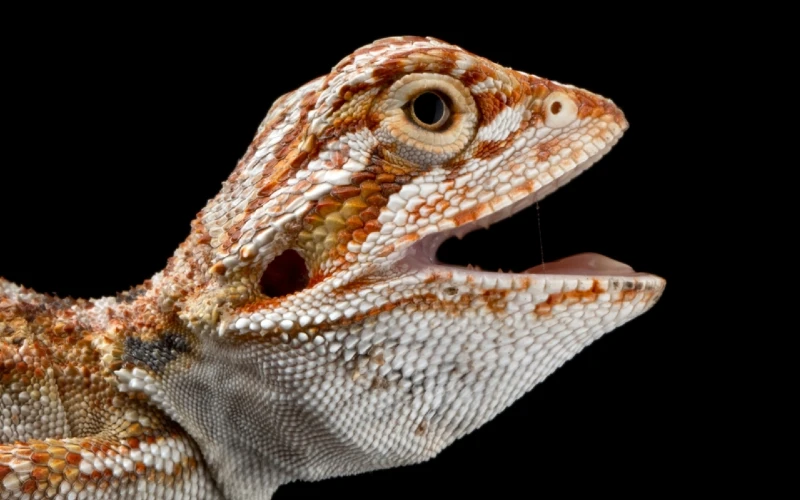
4. Adenovirus
Adenovirus¹ is a viral infection that most commonly impacts young bearded dragons, but it can also occur in adult beardies. It is also referred to as “wasting disease”.
This virus leads to infections within the digestive tract, hepatitis, and kidney disease. Adenovirus can lead to acute and chronic infections, so some beardies may be sick for short periods and die quickly due to weakness, not eating, and other damaging effects of the infection. Others may suffer from a more chronic version of adenovirus.
Chronic adenovirus leads to failure to thrive, weakness, paralysis, and inappetence at random. Other signs of adenovirus include stargazing, seizures, and shaking of the limbs.
Acute and chronic adenovirus both are likely to lead to death. Adenovirus is contagious, so proper hygiene between reptiles is necessary to prevent the spread. There is no cure for this infection, but there are some treatments that may help manage the disease. Excellent husbandry can help manage this disease as well.
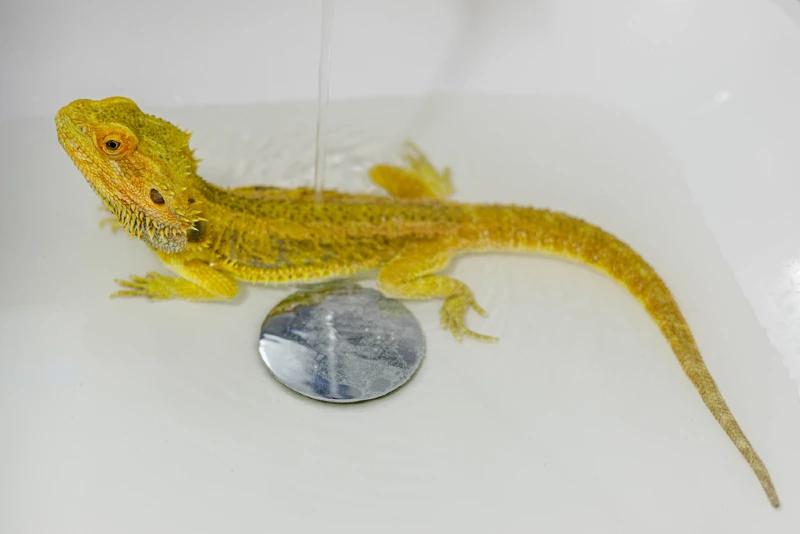
5. Impaction
Impaction is when the digestive tract becomes blocked. This most commonly occurs when a bearded dragon consumes inappropriate things, like substrate, tank décor, and other non-food items. This can also occur in diets high in chitin, which comes from things like mealworms and crickets, and poor hydration. Inappropriate enclosure temperatures can lead to impaction because bearded dragons can only digest food within a specific temperature range.
Improving hydration, diet, and overall husbandry and tank setup can all help to prevent and treat impactions. Warm baths can help impactions move through the digestive tract, but a vet visit may be needed to treat an impaction.
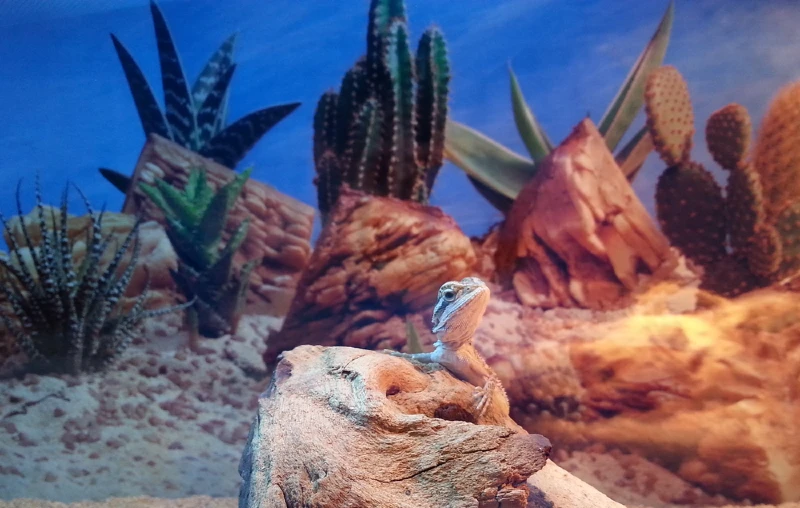
6. Prolapse
Prolapse occurs when the inner part of the cloacal vent is pushed outside of the body. This is usually easy to determine because there will be a red protrusion from the cloacal vent. A prolapse is also often accompanied by lethargy and black bearding. Prolapses commonly occur with severe impaction due to a bearded dragon straining to pass an impaction. This condition requires immediate veterinary treatment to prevent tissue death and long-term damage.
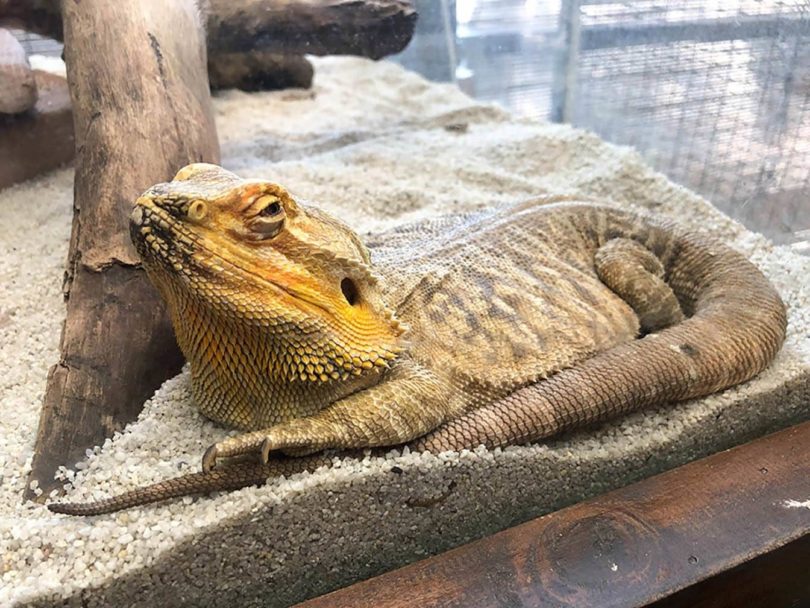
The Importance of Husbandry
All pets have very specific care needs, but reptiles have some of the most complex care needs of all pets. There are so many things to consider with reptiles, including temperature, lighting, substrate, hides, humidity, and diet. Without proper husbandry, a variety of issues can arise in reptiles like bearded dragons. With proper husbandry, they can live long, healthy lives due to their general hardiness, but beardies can die at a very young age if they are not cared for correctly.
There are a ton of great resources to find the proper husbandry requirements of bearded dragons, but a reptile vet or experienced keeper is going to be the best resource when determining how to provide an appropriate environment for your bearded dragon.
Final Thoughts
Bearded dragons make great pets, and they are a great option as a pet for first-time reptile keepers. That doesn’t mean that they can survive without proper care, though. These animals have care needs that will keep them healthy and provide them with long lives.
Unfortunately, many people go into keeping bearded dragons without fully understanding their needs. It’s essential to the long-term survival of your bearded dragon that you are aware of proper care to keep them healthy.
Featured Image Credit: Miriam Fischer, Pexels

